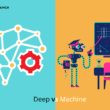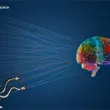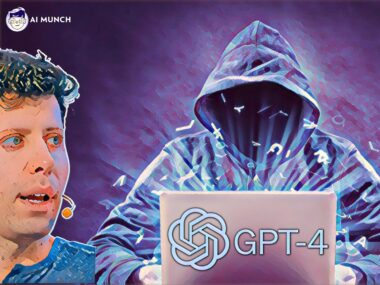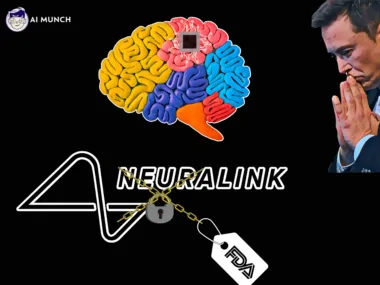Table of Contents Show
I. Introduction
Inequality has been a pervasive issue in societies across the globe, manifesting in various forms and dimensions. Inequalities can lead to disparities in income, opportunities, access to resources, and overall quality of life. These disparities have profound implications for the well-being of individuals, communities, and nations, often resulting in social unrest, economic stagnation, and even conflicts. AI is affecting us in many ways; inequality is one of them Addressing these inequalities is a top priority for governments, NGOs, and international organizations like the United Nations, which has included reducing inequalities as one of its 17 Sustainable Development Goals. But how can AI reduce inequality?
The Potential of AI in Addressing Inequality
Artificial Intelligence (AI) has been revolutionizing multiple aspects of our lives, from automating tasks to enabling advanced data analysis and decision-making. As a powerful tool, AI also offers the potential to mitigate and address some of the most pressing inequality challenges. By harnessing the power of AI, stakeholders can develop targeted interventions, automate processes to eliminate biases, and create new opportunities for underprivileged populations. However, it is essential to ensure that AI is developed and deployed responsibly to avoid exacerbating existing inequalities.
This article aims to provide a comprehensive analysis of how AI can help reduce inequalities across different dimensions, including economic, gender, racial/ethnic, health, and education. The article will also discuss the causes of inequalities and the role of technology in perpetuating or reducing them. Finally, the article will touch upon the challenges and ethical considerations in AI implementation to ensure that its potential is harnessed effectively and responsibly.
II. Understanding the Concept of AI Inequality
A. Types of inequalities
Economic: Economic inequalities refer to disparities in income, wealth, and economic opportunities among individuals and groups. They can lead to poverty, social exclusion, and limited access to essential services.
Gender: Gender inequalities arise from disparities in opportunities, rights, and access to resources between men and women. These inequalities can manifest in various forms, such as the gender pay gap, unequal representation in leadership positions, and gender-based violence.
Racial/ethnic: Racial and ethnic inequalities stem from disparities in opportunities, treatment, and access to resources among individuals and groups based on their race or ethnicity. These inequalities can result in systemic discrimination, marginalization, and social exclusion.
Health: Health inequalities refer to disparities in health status, access to healthcare services, and overall well-being among different populations. These disparities are often driven by social determinants of health, such as income, education, and living conditions.
Education: AI is already helping students. Educational inequalities involve disparities in access to quality education, educational attainment, and learning outcomes among individuals and groups. These disparities can perpetuate intergenerational cycles of poverty and limit social and economic mobility.
There are certain AI-related projects for students to help them in their careers; you can read about those here.
B. Causes of inequality
Inequalities often result from a complex interplay of factors, including historical, social, economic, and political forces. Some of the common causes of inequalities include discrimination, lack of access to quality education and healthcare, unemployment, unequal distribution of resources, and systemic biases.
C. The role of technology in perpetuating or reducing inequality
Technology can both perpetuate and mitigate inequalities. On the one hand, the digital divide and unequal access to technology can exacerbate existing disparities by limiting opportunities for marginalized populations. On the other hand, technology can serve as a powerful tool for reducing inequalities by increasing access to information, resources, and opportunities. The impact of technology on inequalities largely depends on how it is developed, deployed, and governed.
III. AI as a Tool for Reducing Economic Inequality
A. AI-driven job creation
Artificial Intelligence can contribute to job creation by enabling the development of new industries and promoting innovation. AI can lead to the emergence of new roles in areas like data analysis, machine learning, and AI ethics, among others. By fostering job growth in these high-demand fields, AI can help address unemployment and underemployment, thus reducing economic inequalities.
B. AI in the gig economy
AI can play a crucial role in the gig economy by creating platforms that match freelancers and gig workers with suitable job opportunities. These platforms can help individuals access flexible work arrangements and diverse income sources, especially for those facing traditional employment barriers. AI can also optimize the gig economy by improving worker protections, benefits, and fair wage standards.
C. Enhancing financial inclusion through AI
AI is being used in the banking and financial sectors. AI can help enhance financial inclusion by developing algorithms and tools that assess creditworthiness and provide personalized financial services to traditionally underserved populations. AI-driven fintech solutions can enable affordable and accessible banking, insurance, and investment services, empowering individuals to improve their financial well-being and reduce economic disparities.
D. AI for resource allocation and distribution
AI can improve resource allocation and distribution by analyzing vast amounts of data to identify patterns, trends, and needs. Governments and organizations can leverage AI to optimize public spending, target social welfare programs, and develop evidence-based policies to address the root causes of economic inequalities.
E. Case studies of AI-driven projects aimed at reducing economic inequalities
- The AI for Good initiative by the United Nations supports projects using AI to address poverty, hunger, and other global challenges.
- Grameen Foundation‘s AI-based platform provides personalized financial services to rural populations in developing countries.
- The World Bank uses AI to optimize resource allocation for social protection programs.
IV. AI in Promoting Gender Equality
A. AI in eliminating gender bias in hiring
AI-driven recruitment tools can be designed to eliminate gender bias by assessing candidates based on their skills and qualifications rather than their gender. These tools can anonymize candidate information, eliminate biased language in job descriptions, and ensure a more diverse candidate pool, ultimately promoting gender equality in the workplace.
B. AI for work-life balance and flexible work arrangements
AI-powered tools can help organizations create more flexible work arrangements, allowing employees to balance their professional and personal lives better. These tools can optimize work schedules, project management, and communication, making it easier for employees, especially women, to participate in the workforce without sacrificing their family and personal responsibilities.
C. AI-driven initiatives for women’s empowerment and skill development
AI can be harnessed to develop educational programs and platforms that empower women by providing them with opportunities for skill development. AI-driven tools can offer personalized learning experiences and career guidance, enabling women to acquire the skills needed to thrive in the job market and achieve economic independence.
D. AI in addressing gender-based violence
AI can play a role in identifying and addressing gender-based violence by analyzing social media data, online forums, and other digital sources. AI-driven tools can detect signs of abuse, harassment, or violence and trigger appropriate responses, such as alerts to authorities, support organizations, or other relevant stakeholders.
E. Case studies of AI-driven projects aimed at promoting gender equality
- GapJumpers, an AI-powered recruitment platform that uses blind auditions to eliminate gender bias in hiring.
- Rekruut, an AI-driven platform that helps organizations create gender-neutral job descriptions and identify potential biases in their hiring processes.
- Safecity, a crowdsourcing platform that uses AI to identify hotspots of gender-based violence and harassment, enabling targeted interventions and policy changes.
V. AI in Combating Racial and Ethnic Inequalities
A. AI in identifying and addressing biased algorithms
AI can detect and mitigate algorithms’ biases that may inadvertently perpetuate racial and ethnic inequalities. By analyzing data inputs, processing methods, and output decisions, AI systems can be designed to ensure fairness, transparency, and accountability, thereby promoting racial and ethnic equality.
B. AI for improving multicultural communication
AI-driven language translation and interpretation tools can facilitate better communication among individuals from diverse cultural backgrounds. Improved communication can help bridge cultural gaps, reduce misunderstandings, and foster mutual respect, ultimately reducing racial and ethnic inequalities.
C. AI in promoting diversity and inclusion in the workplace
AI can assist organizations in creating more diverse and inclusive work environments by analyzing employee demographics, identifying areas for improvement, and monitoring progress toward diversity goals. AI-driven tools can also provide personalized training and resources to help employees understand and overcome biases, fostering a culture of inclusion.
D. AI-driven initiatives for equal representation and opportunities
AI can be used to develop platforms that connect underrepresented racial and ethnic groups with educational, employment, and entrepreneurial opportunities. AI-driven initiatives can help break down barriers and create a level playing field for all individuals by ensuring equal access to resources and networks.
E. Case studies of AI-driven projects aimed at reducing racial and ethnic inequalities
- FairFrame, an AI-based platform that helps organizations identify and address unconscious biases in their decision-making processes.
- Pymetrics, an AI-driven recruitment tool that uses neuroscience-based games to assess candidates’ potential, ensuring a more equitable hiring process.
- Textio, an AI-powered writing tool that identifies biased language in job descriptions, promoting more inclusive and diverse candidate pools.
VI. AI in Enhancing Health Equity
A. AI for remote healthcare access and telemedicine
AI is affecting our IQ level. This can improve access to healthcare services, particularly for rural and remote populations, through telemedicine and remote monitoring. AI-driven tools can enable virtual consultations, remote diagnostics, and health management, reducing disparities in healthcare access and improving health outcomes for marginalized communities.
B. AI in disease diagnosis, prevention, and treatment
Artificial Intelligence can be trained to detect human emotions. AI can enhance disease diagnosis, prevention, and treatment by analyzing vast amounts of medical data to identify patterns, predict health risks, and personalize treatment plans. By providing more accurate and targeted healthcare, AI can contribute to reducing health disparities and improving overall health equity.
C. AI for personalized medicine and targeted health interventions
AI-driven tools can enable personalized medicine by analyzing individual genetic, lifestyle, and environmental data to tailor health interventions to specific needs. Personalized medicine can lead to more effective and efficient healthcare, ensuring that resources are allocated fairly and equitably across populations.
D. AI in addressing health disparities among marginalized communities
AI can be used to identify health disparities among marginalized communities, such as racial and ethnic minorities, low-income populations, and people with disabilities. By analyzing health data and identifying areas of concern, AI-driven tools can inform targeted interventions and policies to improve health equity for these communities.
E. Case studies of AI-driven projects aimed at enhancing health equity
- Zipline, a drone delivery service that uses AI to deliver medical supplies to remote and underserved areas, improving healthcare access for marginalized populations.
- Aidoc, an AI-driven medical imaging platform that assists radiologists in detecting and diagnosing diseases, improving accuracy and reducing disparities in healthcare outcomes.
- IBM Watson Health, an AI-driven platform that analyzes medical data to inform personalized treatment plans, ensuring more equitable and effective healthcare for all patients.
VII. AI in Bridging the Education Gap
A. AI in personalized learning and adaptive education
AI-driven tools can create personalized learning experiences by adapting to each student’s unique learning style, pace, and progress. By analyzing student data and providing real-time feedback, AI can help educators develop customized learning paths and interventions, ensuring students receive the support they need to succeed.
B. AI for accessible and inclusive education
AI can improve accessibility and inclusivity in education by developing tools that adapt learning materials and environments to the needs of diverse learners. AI-driven platforms can provide alternative formats, such as audio, visual, or tactile materials, and offer personalized accommodations to ensure all students can access and engage with educational content.
C. AI-driven tools for language learning and literacy
AI can play a vital role in language learning and literacy by providing interactive, engaging, and personalized learning experiences. AI-driven language learning platforms can offer real-time feedback, speech recognition, and adaptive content to help students acquire language skills and achieve fluency more effectively.
D. AI in supporting students with special needs
AI can offer tailored support to students with special needs by developing tools that address their unique learning requirements. AI-driven platforms can provide personalized learning plans, accommodations, and assistive technologies, such as text-to-speech, speech-to-text, or visual support systems, to help students with special needs succeed academically.
E. Case studies of AI-driven projects aimed at bridging the education gap
- Knewton, an AI-driven adaptive learning platform that personalizes course content and assessments to each student’s unique needs, improving learning outcomes and reducing achievement gaps.
- Bookshare, an AI-powered platform that provides accessible e-books and educational materials for students with reading barriers, such as dyslexia or visual impairments.
- Duolingo, an AI-driven language learning app that adapts lessons and exercises to individual learning styles and progress, making language learning more accessible and effective for diverse learners.
VIII. Challenges and Ethical Considerations in AI Implementation
A. The risk of biased AI algorithms
AI systems are only as good as the data they are trained on, and biased or incomplete data can lead to biased algorithms. It is essential to ensure that AI models are trained on diverse, representative, and unbiased data sets to prevent perpetuating existing inequalities or creating new ones.
B. The digital divide and access to AI technology
The digital divide refers to the gap between those with access to modern technology and those without access. Ensuring that AI-driven solutions are accessible and affordable for all, especially marginalized populations, is crucial to avoid exacerbating existing inequalities and to maximize the potential of AI in reducing disparities.
C. Ensuring privacy and data protection
AI systems rely heavily on data to function effectively, raising privacy and data protection concerns. Developing and implementing robust data protection policies and practices that safeguard personal information while ensuring that AI systems can still access the data needed to address inequalities effectively is crucial.
D. The importance of interdisciplinary collaboration and stakeholder engagement
Addressing the complex challenges of inequality requires collaboration among researchers, policymakers, NGOs, and other stakeholders. Interdisciplinary collaboration can lead to innovative, effective, and ethical AI-driven solutions that consider various perspectives and interests, ensuring that AI is harnessed responsibly and inclusively.
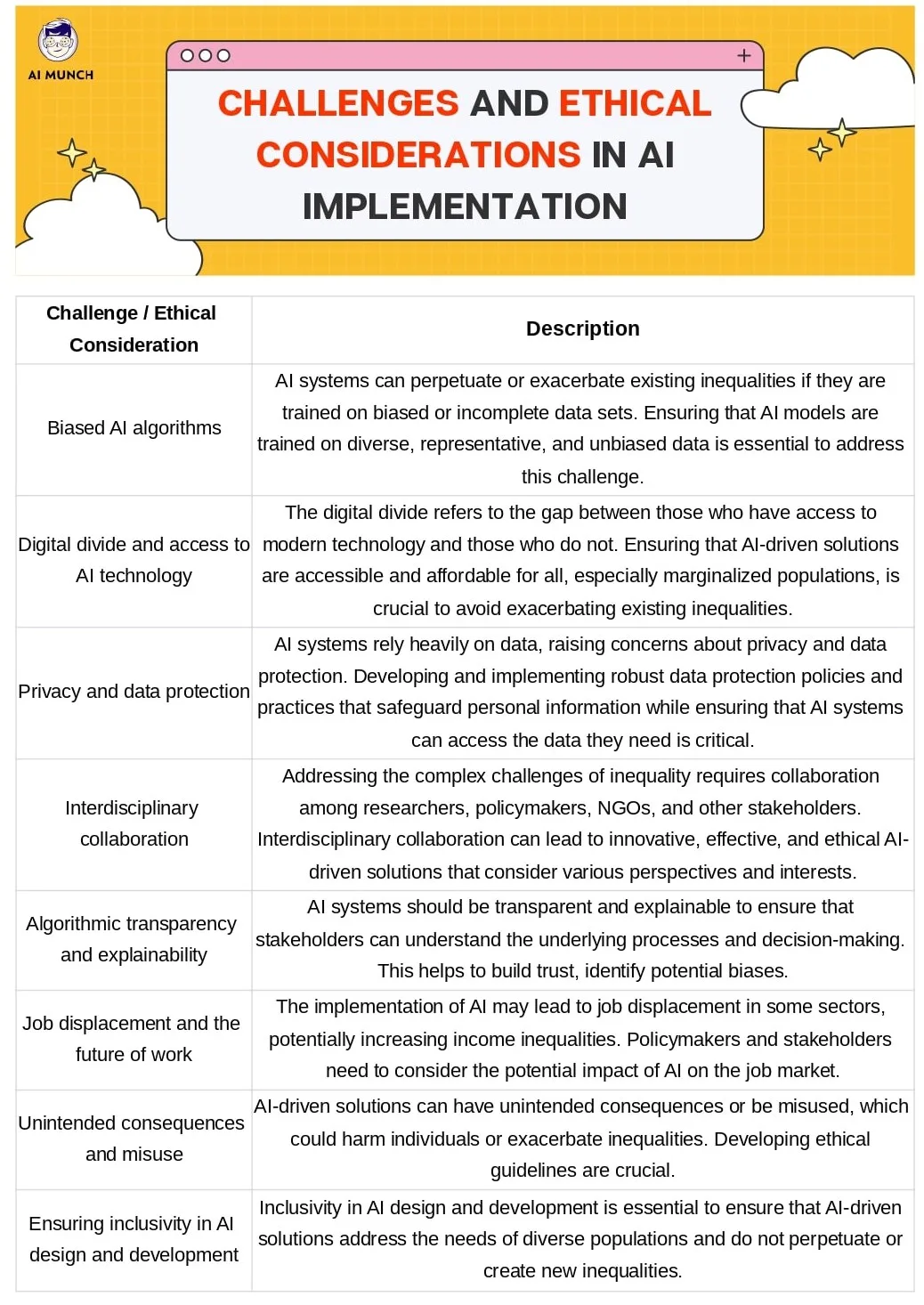
IX. What are the steps to solving AI inequality?
To solve a mathematical inequality, follow these general steps:
- Simplify both sides of the inequality, if necessary. Perform any necessary arithmetic operations, such as addition, subtraction, multiplication, or division, to simplify the expressions on both sides of the inequality.
- Eliminate any parentheses or brackets. Apply the distributive property to remove parentheses or brackets by multiplying the term outside the parentheses with each term inside the parentheses.
- Combine like terms on each side of the inequality. Add or subtract like terms (terms with the same variable and exponent) to simplify the expressions further.
- Isolate the variable by using inverse operations to eliminate terms and coefficients. Use addition, subtraction, multiplication, or division to move terms containing the variable to one side of the inequality and constant terms to the other side. Once the variable is isolated, divide or multiply both sides of the inequality by the coefficient of the variable to solve for the variable.
- Check the solution to ensure it satisfies the original inequality. Substitute the solution back into the original inequality to verify that it results in a true statement.
Remember that when solving an inequality, if you multiply or divide both sides by a negative number, you must reverse the inequality symbol (e.g., > becomes < and vice versa).
X. Conclusion
A. The potential of AI in reducing inequalities across various dimensions
The term ‘AI inequality’ is getting heat since the launch of openAI’s GPT models and Goolge Bard. AI can significantly impact reducing inequalities across various dimensions, such as economic, gender, racial/ethnic, health, and education. By harnessing the power of AI, stakeholders can develop targeted interventions, automate processes to eliminate biases, and create new opportunities for underprivileged populations.
B. The importance of a thoughtful and inclusive approach to AI implementation
To maximize the potential of AI in reducing inequalities, it is essential to take a thoughtful and inclusive approach to its implementation. This means carefully considering the ethical implications, addressing the digital divide, ensuring privacy and data protection, and fostering interdisciplinary collaboration and stakeholder engagement.
The potential of AI in reducing inequalities calls for concerted efforts from researchers, policymakers, and stakeholders to harness its power responsibly and effectively. By working together, we can develop innovative AI-driven solutions that address the most pressing inequality challenges and contribute to a more just, equitable, and inclusive world.
FAQs about AI inequality
AI has the potential to both reduce and exacerbate inequalities, depending on how it is developed and implemented. When used responsibly and inclusively, AI can help address various forms of inequality by offering targeted interventions, automating processes to eliminate biases, and creating new opportunities for underprivileged populations. However, if AI systems are trained on biased data or access to AI technology is limited, it can further perpetuate existing inequalities.
AI can reinforce inequality if it is based on biased data, perpetuating stereotypes and discriminatory practices. Additionally, unequal access to AI technology due to the digital divide can further widen the gap between those who benefit from AI advancements and those who are left behind.
Solving inequality requires a multifaceted approach involving policymakers, researchers, NGOs, and other stakeholders. Strategies include promoting equal access to education, healthcare, and economic opportunities, implementing policies that address systemic discrimination, and leveraging technology, such as AI, to create targeted interventions for marginalized populations.
The 5 steps to solving a mathematical inequality are:
a. Simplify both sides of the inequality, if necessary.
b. Eliminate any parentheses or brackets.
c. Combine like terms on each side of the inequality.
d. Isolate the variable by using inverse operations to eliminate terms and coefficients.
e. Check the solution to ensure it satisfies the original inequality.
a. Economic inequality: The wealth gap between the richest and poorest individuals is a significant issue, resulting in unequal access to resources, opportunities, and social mobility.
b. Gender inequality: Women and girls often face barriers in accessing education, job opportunities, and equal pay, as well as experiencing gender-based violence and discrimination.
c. Racial and ethnic inequality: Systemic racism and discrimination against racial and ethnic minorities can result in disparities in education, employment, healthcare, and criminal justice treatment.
Do you want to read more? Check out these articles.



